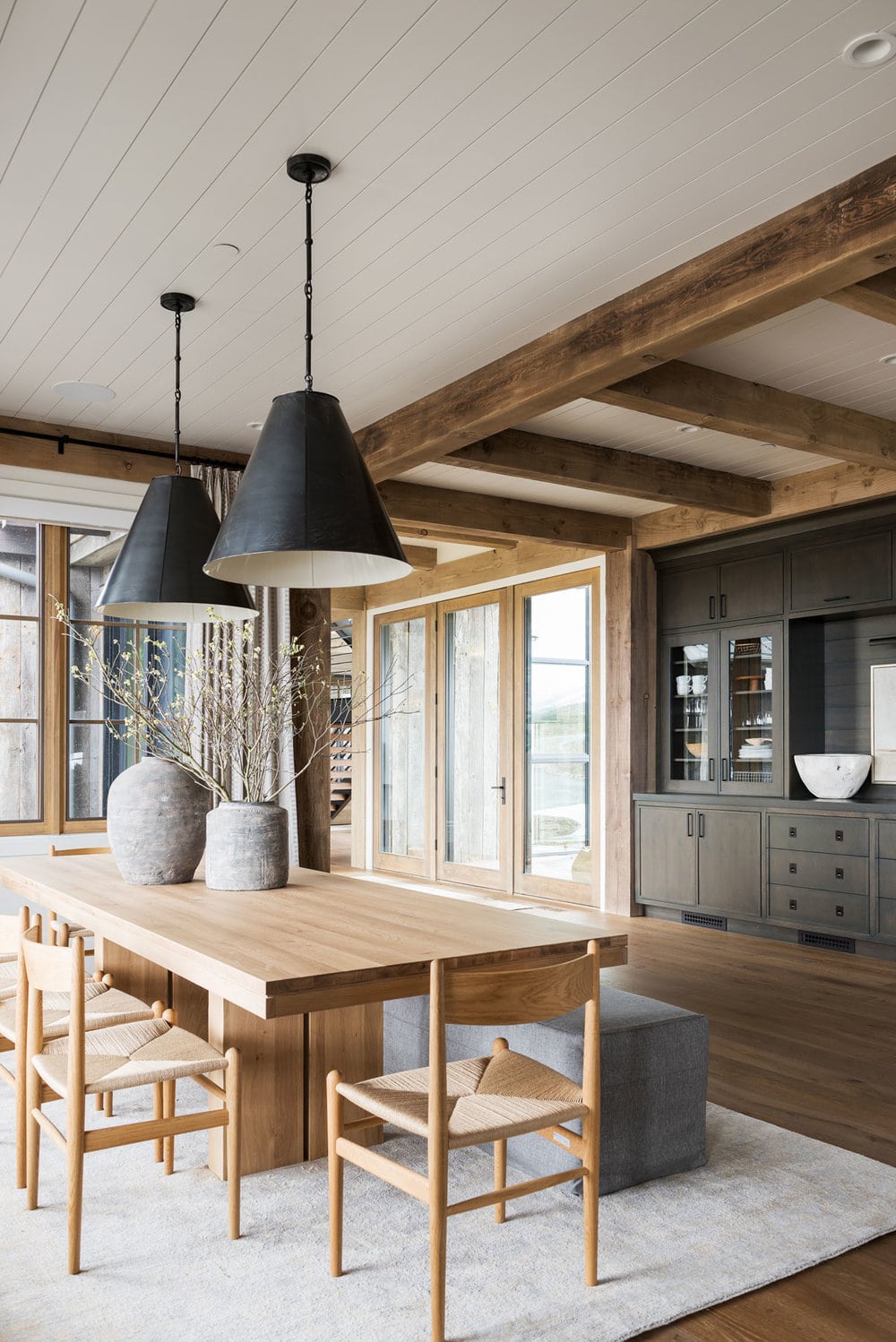We’re constantly being asked about if it’s okay to mix different wood tones in a space. We actually recommend mixing different wood tones because using the same tone everywhere can make the space look really bare. Adding in various wood tones can add beautiful layers and contrast into a space. But to achieve that natural, effortless look, you have to know how to mix wood tones the right way. We’re here to help! Here’s some tips for how to mix wood tones in your home.

Design by Studio McGee | Photography by Lucy Call
Undertones
Each type of wood can be categorized under having either warm or cool undertones. Warm undertones include hints yellow, orange, and red, while cool undertones are closer with blue, green, black, and gray. When mixing woods, you’ll want them to all have the same undertones – all warm or all cool. This will help make the room feel cohesive and blend together rather than overwhelming the room.

Design by BANDD Design | Photography by Molly Culver
PRO TIP: Get samples of the woods that you’re considering using in your space and compare the wood’s undertones next to each other before getting started. Place the samples in the room and see how they look together in different types of lighting, such as during the day and at night.

Design by Leclair Decor
Pick A Dominant Wood
Choose a dominant wood tone to serve as the base for the entire room. The dominant wood is either the flooring, the cabinetry, or the largest piece of furniture in the space. Based off of the dominant wood, select accent woods that compliment it and bring some contrast and layers to the overall look. If you’re wanting to make more of a statement, choose a light and dark wood. Below you can find an example of a dark and a light wood tone used in a kitchen from our Small Drive Remodel project, where we used white oak as the dominant wood on the cabinetry and a cherry for the ceiling beams and window sill. For a more blended and subtle look, incorporate a light, medium, and dark wood.

Design by BANDD Design | Photography by Ryann Ford
Keep Natural Variations In Mind
Since wood is a natural element, there are usually natural variations seen across each wood type. You’re going to notice some differences in the grains of the woods that you selected, so keep that in mind when selecting your wood types if you don’t want the grains to make the room feel busy. We suggest going with a white oak or maple as one of your selections, as these wood types tend to have more subtle variations and a cleaner look.

Design by Annalisa Avelar | Photography by Christopher Stark
Create Contrast
It’s important that you don’t let the various wood tones overwhelm the room. Create some contrast and balance by incorporating pieces that are made of different materials. For instance, if you’re mixing wood tones in a living room, add in a metal coffee table, a sofa with a cozy fabric, and an area rug to help break up the look of the space. If you’re mixing wood tones in a kitchen or bathroom, use backsplash tiles and matte hardware to serve as contrasting pieces. We used a bold wallpaper, a mix of metal and fabric seating, and a rug to help break up the wood tones in this dining room from our Camelot project.

Design by BANDD Design | Photography by Molly Culver

